Verdict
The RedMagic 11 Pro is one of the few smartphones in its performance class that offers an uninterrupted display and skips the camera bump altogether. Its performance is top-tier, and the gaming features are genuinely impressive.
The downsides are hard to ignore. The device can get uncomfortably hot on its surface, and the internal fan can be extremely loud. There’s also no Wi-Fi 7, no modern Bluetooth 6.0, and no eSIM support.
If these limitations and the short software-update policy don’t bother you, and raw performance is your priority, then this device is the right pick.
Pros
Cons
Price and availability
The gaming smartphone can be purchased directly from RedMagic or ordered through Amazon (Germany).
Table of Contents
- Verdict
- Specifications: RedMagic 11 Pro
- Case and features - No notch and no camera bump on the RedMagic 11 Pro
- Communication and operation - RedMagic 11 Pro relies on Wi-Fi 6E
- Software and sustainability - Uncertain update future
- Cameras – Lacking zoom and lacking flair
- Display - Bright and easy on the eyes
- Performance, emissions and battery life - Hot potatoes
- Notebookcheck overall rating
- Possible alternatives in comparison
The RedMagic 11 Pro succeeds the RedMagic 10s Pro and stands out primarily thanks to its updated SoC and refreshed design. The battery has also been significantly enlarged, and several new AI features have been added.
The RedMagic 11 Pro starts at €799 for the base storage configuration, but the higher-capacity versions can climb to €999.
Specifications: RedMagic 11 Pro
Case and features - No notch and no camera bump on the RedMagic 11 Pro
The RedMagic 11 Pro is available in Cryo (matte black), Nightfreeze (transparent black), and Subzero (transparent silver). Not every color is offered in every storage configuration. The base model comes with 12 GB of RAM and 256 GB of internal storage, while 16/512 GB and 24/1,024 GB versions are also available.
Build quality is strong, with tight tolerances and a sturdy aluminum frame. The device is protected by an unspecified version of Gorilla Glass and carries an IPX8 water-resistance rating.
A standout feature of the RedMagic 11 Pro is the absence of a camera bump; the camera module sits beneath the rear glass. The front is equally clean, with neither a notch nor a punch-hole. The selfie camera sits invisibly under the display.
Alongside the fast USB 3.2 port, the phone includes multiple configurable LED elements. For wired audio, both a low-noise 3.5 mm jack (SNR: 96.6 dBFS) and a USB-C port are available.
Communication and operation - RedMagic 11 Pro relies on Wi-Fi 6E
The RedMagic 11 Pro offers solid mobile network support, but a few frequency bands are missing, which limits truly unrestricted international use. The phone also skips modern Wi-Fi 7, sticking instead to Wi-Fi 6E.
As with its predecessor, the two shoulder buttons perform well and offer extensive customization options. For biometric security, the under-display ultrasonic fingerprint sensor delivers fast response times and high accuracy. The linear vibration motor rounds things out with precise, punchy haptic feedback.
| Networking | |
| Nubia RedMagic 11 Pro | |
| iperf3 transmit AXE11000 6GHz | |
| iperf3 receive AXE11000 6GHz | |
| Xiaomi 17 Pro Max | |
| iperf3 transmit AXE11000 | |
| iperf3 receive AXE11000 | |
| iperf3 transmit AXE11000 6GHz | |
| iperf3 receive AXE11000 6GHz | |
| Samsung Galaxy S25 Ultra | |
| iperf3 transmit AXE11000 | |
| iperf3 receive AXE11000 | |
| iperf3 transmit AXE11000 6GHz | |
| iperf3 receive AXE11000 6GHz | |
| Xiaomi Poco F7 Ultra | |
| iperf3 transmit AXE11000 | |
| iperf3 receive AXE11000 | |
| Average Wi-Fi 6E | |
| iperf3 transmit AXE11000 | |
| iperf3 receive AXE11000 | |
| iperf3 transmit AXE11000 6GHz | |
| iperf3 receive AXE11000 6GHz | |
| Average of class Smartphone | |
| iperf3 transmit AXE11000 | |
| iperf3 receive AXE11000 | |
| iperf3 transmit AXE11000 6GHz | |
| iperf3 receive AXE11000 6GHz | |
Software and sustainability - Uncertain update future
Running Google Android 16 with RedMagic UI, the smartphone looks modern and includes its own launcher along with several AI features. Unfortunately, RedMagic provides no concrete information about long-term software support.
There’s also room for improvement on the sustainability side. There are no spare parts, no repair guides, and the packaging relies heavily on plastic.
Cameras – Lacking zoom and lacking flair
The RedMagic 11 Pro’s front camera sits under the display with no cutout. While this delivers an uninterrupted viewing experience, image quality is mediocre. Photos and videos look low-contrast and somewhat washed out.
The main camera produces noticeably better results and can even capture solid shots in low light. However, the ultra-wide camera, despite its high resolution, delivers limited detail, and zoom is restricted to digital only.
Image comparison
Choose a scene and navigate within the first image. One click changes the position on touchscreens. One click on the zoomed-in image opens the original in a new window. The first image shows the scaled photograph of the test device.
HauptkameraHauptkameraUltraweitwinkel5-facher ZoomLow-Light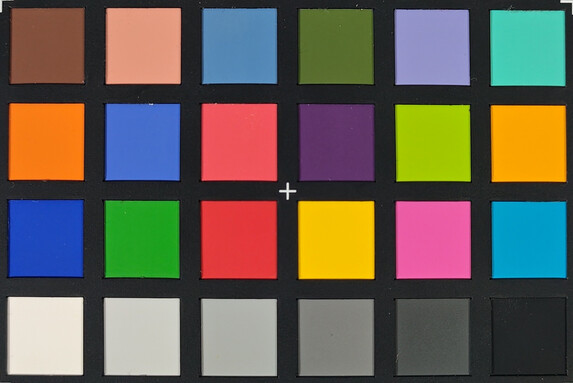
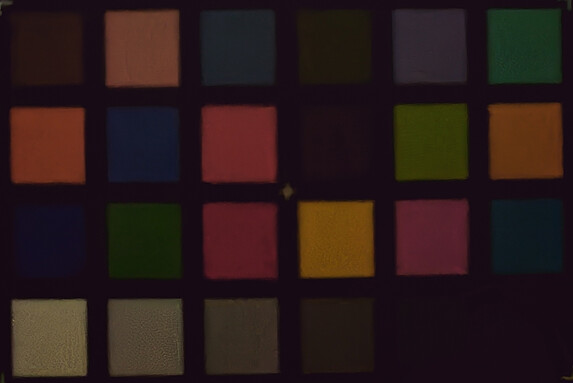
Display - Bright and easy on the eyes
The RedMagic 11 Pro’s 6.85-inch AMOLED display delivers an uninterrupted viewing experience and excellent brightness. Even on a full-white screen, it nearly reaches the manufacturer's claimed 1,800 cd/m², and with a smaller white window (APL18), it easily surpasses it. We measured up to 2,375 cd/m². HDR brightness is only slightly lower, although not all HDR standards are supported.
Typical OLED flickering is visible under the oscilloscope, showing a relatively low base frequency of 120 Hz. However, high-frequency PWM dimming and a shallow amplitude curve help reduce the visual strain.
| |||||||||||||||||||||||||
Brightness Distribution: 90 %
Center on Battery: 1711 cd/m²
Contrast: ∞:1 (Black: 0 cd/m²)
ΔE ColorChecker Calman: 1.7 | ∀{0.5-29.43 Ø4.78}
ΔE Greyscale Calman: 2.3 | ∀{0.09-98 Ø5}
100% sRGB (Calman 2D)
Gamma: 2.3
CCT: 6478 K
| Nubia RedMagic 11 Pro AMOLED, 2688x1216, 6.8" | Xiaomi 17 Pro Max AMOLED, 2608x1200, 6.9" | Samsung Galaxy S25 Ultra Dynamic AMOLED 2X, 3120x1440, 6.9" | Xiaomi Poco F7 Ultra Flow AMOLED, 3200x1440, 6.7" | |
|---|---|---|---|---|
| Screen | 0% | -34% | 5% | |
| Brightness middle (cd/m²) | 1711 | 1099 -36% | 1357 -21% | 1846 8% |
| Brightness (cd/m²) | 1715 | 1067 -38% | 1350 -21% | 1850 8% |
| Brightness Distribution (%) | 90 | 95 6% | 94 4% | 93 3% |
| Black Level * (cd/m²) | ||||
| Colorchecker dE 2000 * | 1.7 | 1.05 38% | 3.1 -82% | 1.2 29% |
| Colorchecker dE 2000 max. * | 2.5 | 2.38 5% | 4.7 -88% | 2.9 -16% |
| Greyscale dE 2000 * | 2.3 | 1.7 26% | 2.2 4% | 2.3 -0% |
| Gamma | 2.3 96% | 2.232 99% | 2 110% | 2.25 98% |
| CCT | 6478 100% | 6779 96% | 6391 102% | 6707 97% |
* ... smaller is better
| Display / HDR Peak Brightness | |
| Xiaomi Poco F7 Ultra | |
| Samsung Galaxy S25 Ultra | |
| Nubia RedMagic 11 Pro | |
| Display / APL18 Peak Brightness | |
| Xiaomi Poco F7 Ultra | |
| Samsung Galaxy S25 Ultra | |
| Nubia RedMagic 11 Pro | |
Screen Flickering / PWM (Pulse-Width Modulation)
| Screen flickering / PWM detected | 120 Hz Amplitude: 17 % Secondary Frequency: 2083 Hz | ||
The display backlight flickers at 120 Hz (worst case, e.g., utilizing PWM) . The frequency of 120 Hz is very low, so the flickering may cause eyestrain and headaches after extended use. In comparison: 53 % of all tested devices do not use PWM to dim the display. If PWM was detected, an average of 8142 (minimum: 5 - maximum: 343500) Hz was measured. | |||
Measurement series with fixed zoom level and different brightness settings (The amplitude curve at minimum brightness looks flat, but this is due to the scaling. The info box shows the enlarged version of the amplitude at minimum brightness)
Display Response Times
| ↔ Response Time Black to White | ||
|---|---|---|
| 1.25 ms ... rise ↗ and fall ↘ combined | ↗ 0.6065 ms rise | |
| ↘ 0.644 ms fall | ||
| The screen shows very fast response rates in our tests and should be very well suited for fast-paced gaming. In comparison, all tested devices range from 0.1 (minimum) to 240 (maximum) ms. » 5 % of all devices are better. This means that the measured response time is better than the average of all tested devices (20.2 ms). | ||
| ↔ Response Time 50% Grey to 80% Grey | ||
| 1.32 ms ... rise ↗ and fall ↘ combined | ↗ 0.6065 ms rise | |
| ↘ 0.7155 ms fall | ||
| The screen shows very fast response rates in our tests and should be very well suited for fast-paced gaming. In comparison, all tested devices range from 0.165 (minimum) to 636 (maximum) ms. » 5 % of all devices are better. This means that the measured response time is better than the average of all tested devices (31.7 ms). | ||
Performance, emissions and battery life - Hot potatoes
Powered by the Snapdragon 8 Elite Gen 5, the RedMagic 11 Pro delivers undeniably high performance, helped along by its active cooling system. The internal fan can ramp up to 24,000 RPM, and you can definitely hear it when it does.
Despite the cooling, surface temperatures still climb sharply, which can become uncomfortable during longer gaming sessions.
Battery life is very good overall, although the significantly larger battery had us expecting even longer runtimes. In testing, the smartphone recharged fully in just 67 minutes.
| Nubia RedMagic 11 Pro | Xiaomi 17 Pro Max | Samsung Galaxy S25 Ultra | Xiaomi Poco F7 Ultra | Average 512 GB UFS 4.1 Flash | Average of class Smartphone | |
|---|---|---|---|---|---|---|
| AndroBench 3-5 | 1% | -26% | -19% | -18% | -46% | |
| Sequential Read 256KB (MB/s) | 4035.9 | 3971.4 -2% | 3823.28 -5% | 4002.68 -1% | 3816 ? -5% | 2227 ? -45% |
| Sequential Write 256KB (MB/s) | 3728.82 | 3899.9 5% | 3361.24 -10% | 3464.43 -7% | 3282 ? -12% | 1843 ? -51% |
| Random Read 4KB (MB/s) | 575.62 | 548.4 -5% | 287.85 -50% | 311.24 -46% | 379 ? -34% | 295 ? -49% |
| Random Write 4KB (MB/s) | 537.11 | 561.3 5% | 331.61 -38% | 411.78 -23% | 434 ? -19% | 335 ? -38% |
(-) The maximum temperature on the upper side is 55.4 °C / 132 F, compared to the average of 35.2 °C / 95 F, ranging from 21.9 to 247 °C for the class Smartphone.
(-) The bottom heats up to a maximum of 54.1 °C / 129 F, compared to the average of 34 °C / 93 F
(+) In idle usage, the average temperature for the upper side is 29.3 °C / 85 F, compared to the device average of 32.9 °C / 91 F.
3DMark Stress Tests
| 3DMark | |
| Wild Life Stress Test Stability | |
| Nubia RedMagic 11 Pro | |
| Xiaomi Poco F7 Ultra | |
| Xiaomi 17 Pro Max | |
| Samsung Galaxy S25 Ultra | |
| Wild Life Extreme Stress Test | |
| Nubia RedMagic 11 Pro | |
| Xiaomi Poco F7 Ultra | |
| Xiaomi 17 Pro Max | |
| Samsung Galaxy S25 Ultra | |
| Solar Bay Stress Test Stability | |
| Nubia RedMagic 11 Pro | |
| Xiaomi Poco F7 Ultra | |
| Xiaomi 17 Pro Max | |
| Samsung Galaxy S25 Ultra | |
| Steel Nomad Light Stress Test Stability | |
| Nubia RedMagic 11 Pro | |
| Xiaomi Poco F7 Ultra | |
| Samsung Galaxy S25 Ultra | |
Nubia RedMagic 11 Pro audio analysis
(+) | speakers can play relatively loud (90.7 dB)
Bass 100 - 315 Hz
(-) | nearly no bass - on average 17.5% lower than median
(±) | linearity of bass is average (7.3% delta to prev. frequency)
Mids 400 - 2000 Hz
(±) | higher mids - on average 8.6% higher than median
(+) | mids are linear (6.4% delta to prev. frequency)
Highs 2 - 16 kHz
(±) | higher highs - on average 8.7% higher than median
(+) | highs are linear (6% delta to prev. frequency)
Overall 100 - 16.000 Hz
(±) | linearity of overall sound is average (20.2% difference to median)
Compared to same class
» 32% of all tested devices in this class were better, 9% similar, 59% worse
» The best had a delta of 11%, average was 35%, worst was 134%
Compared to all devices tested
» 51% of all tested devices were better, 8% similar, 40% worse
» The best had a delta of 4%, average was 24%, worst was 134%
Samsung Galaxy S25 Ultra audio analysis
(+) | speakers can play relatively loud (93 dB)
Bass 100 - 315 Hz
(-) | nearly no bass - on average 21.5% lower than median
(+) | bass is linear (4.8% delta to prev. frequency)
Mids 400 - 2000 Hz
(+) | balanced mids - only 4.3% away from median
(+) | mids are linear (4.4% delta to prev. frequency)
Highs 2 - 16 kHz
(+) | balanced highs - only 3.3% away from median
(+) | highs are linear (1.4% delta to prev. frequency)
Overall 100 - 16.000 Hz
(+) | overall sound is linear (14.6% difference to median)
Compared to same class
» 1% of all tested devices in this class were better, 2% similar, 96% worse
» The best had a delta of 11%, average was 35%, worst was 134%
Compared to all devices tested
» 18% of all tested devices were better, 4% similar, 78% worse
» The best had a delta of 4%, average was 24%, worst was 134%
| Battery runtime - WiFi v1.3 | |
| Nubia RedMagic 11 Pro | |
| Xiaomi 17 Pro Max | |
| Samsung Galaxy S25 Ultra | |
| Xiaomi Poco F7 Ultra | |
Notebookcheck overall rating
The RedMagic 11 Pro presents itself as a high-performance gaming smartphone with useful additional features, but like its predecessors, it suffers from potentially high heat buildup.
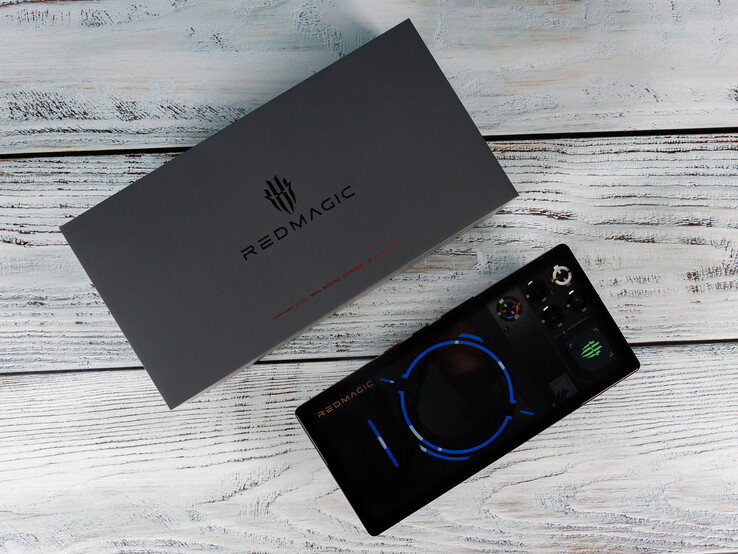
Nubia RedMagic 11 Pro
- 11/24/2025 v8
Daniel Schmidt
Possible alternatives in comparison
Image | Model / Review | Price | Weight | Drive | Display |
|---|---|---|---|---|---|
| Nubia RedMagic 11 Pro Qualcomm Snapdragon 8 Elite Gen 5 ⎘ Qualcomm Adreno 840 ⎘ 16 GB Memory, 512 GB | Amazon: 1. $7.99 Suttkue for Nubia RedMagic 1... 2. $9.90 Anbzsign 2 Pack for ZTE Nubi... 3. $9.99 Case for Nubia RedMagic 11 P... List Price: 799€ | 230 g | 512 GB UFS 4.1 Flash | 6.84" 2688x1216 431 PPI AMOLED | |
| Xiaomi 17 Pro Max Qualcomm Snapdragon 8 Elite Gen 5 ⎘ Qualcomm Adreno 840 ⎘ 16 GB Memory, 1024 GB | Amazon: 1. $8.19 Anoowkoa 3 Pack Glass Screen... 2. $9.90 Anbzsign 2+1 Pack for Xiaomi... 3. $7.63 Ailun 3 Pack Screen Protecto... List Price: 940€ | 219 g | 1TB UFS 4.1 Flash | 6.90" 2608x1200 416 PPI AMOLED | |
| Samsung Galaxy S25 Ultra Qualcomm Snapdragon 8 Elite for Galaxy ⎘ Qualcomm Adreno 830 ⎘ 12 GB Memory, 256 GB | Amazon: 1. SAMSUNG Galaxy S25 Ultra, 25... 2. $919.50 SAMSUNG Galaxy S25 Ultra SM-... 3. $1,120.00 Samsung Galaxy S25 Ultra ... List Price: 1449€ | 218 g | 256 GB UFS 4.0 Flash | 6.90" 3120x1440 498 PPI Dynamic AMOLED 2X | |
| Xiaomi Poco F7 Ultra Qualcomm Snapdragon 8 Elite ⎘ Qualcomm Adreno 830 ⎘ 16 GB Memory, 512 GB | Amazon: 1. $579.99 XIAOMI Poco F7 PRO 5G + 4G L... 2. $11.99 Ibywind For Xiaomi Poco F7 U... 3. $7.99 Suttkue for Xiaomi Poco F7 P... List Price: 800€ | 212 g | 512 GB UFS 4.1 Flash | 6.67" 3200x1440 526 PPI Flow AMOLED |
Transparency
The selection of devices to be reviewed is made by our editorial team. The test sample was provided to the author as a loan by the manufacturer or retailer for the purpose of this review. The lender had no influence on this review, nor did the manufacturer receive a copy of this review before publication. There was no obligation to publish this review. As an independent media company, Notebookcheck is not subjected to the authority of manufacturers, retailers or publishers.
This is how Notebookcheck is testing
Every year, Notebookcheck independently reviews hundreds of laptops and smartphones using standardized procedures to ensure that all results are comparable. We have continuously developed our test methods for around 20 years and set industry standards in the process. In our test labs, high-quality measuring equipment is utilized by experienced technicians and editors. These tests involve a multi-stage validation process. Our complex rating system is based on hundreds of well-founded measurements and benchmarks, which maintains objectivity. Further information on our test methods can be found here.





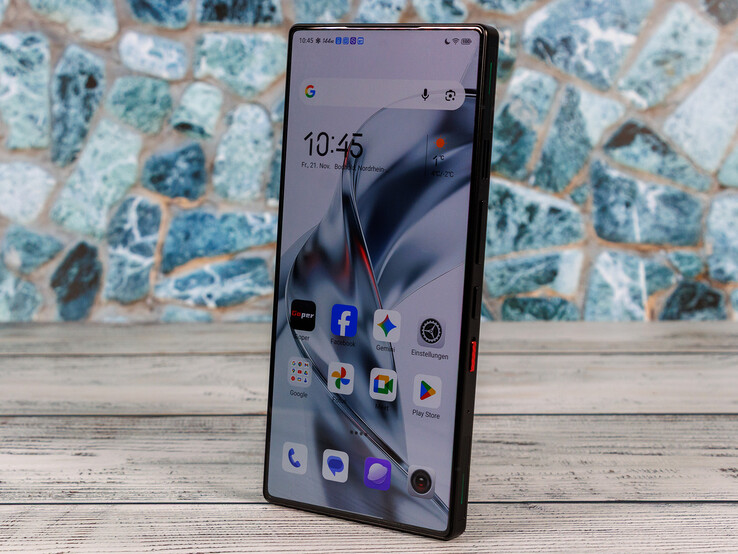










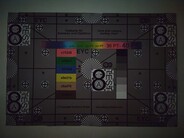
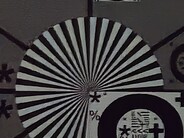
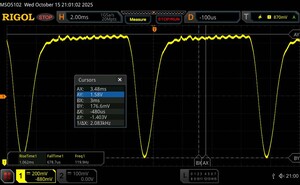





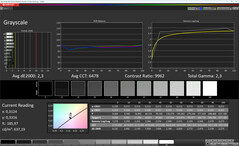
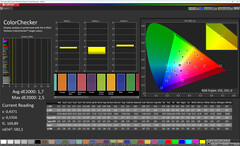
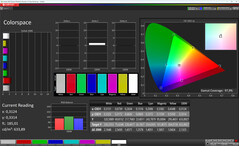

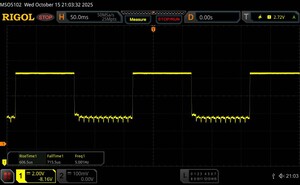
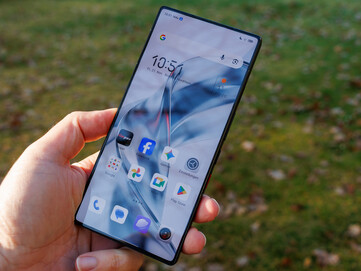

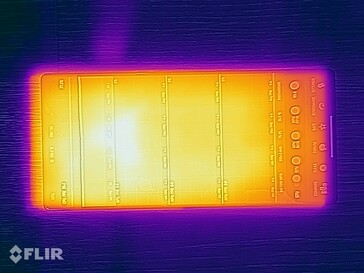
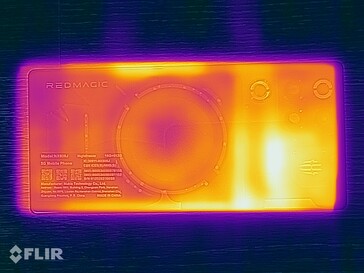
 Total Sustainability Score:
Total Sustainability Score: 




